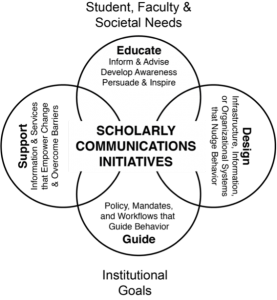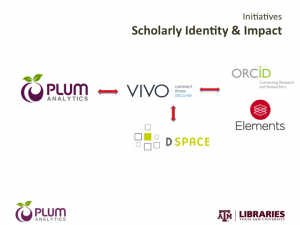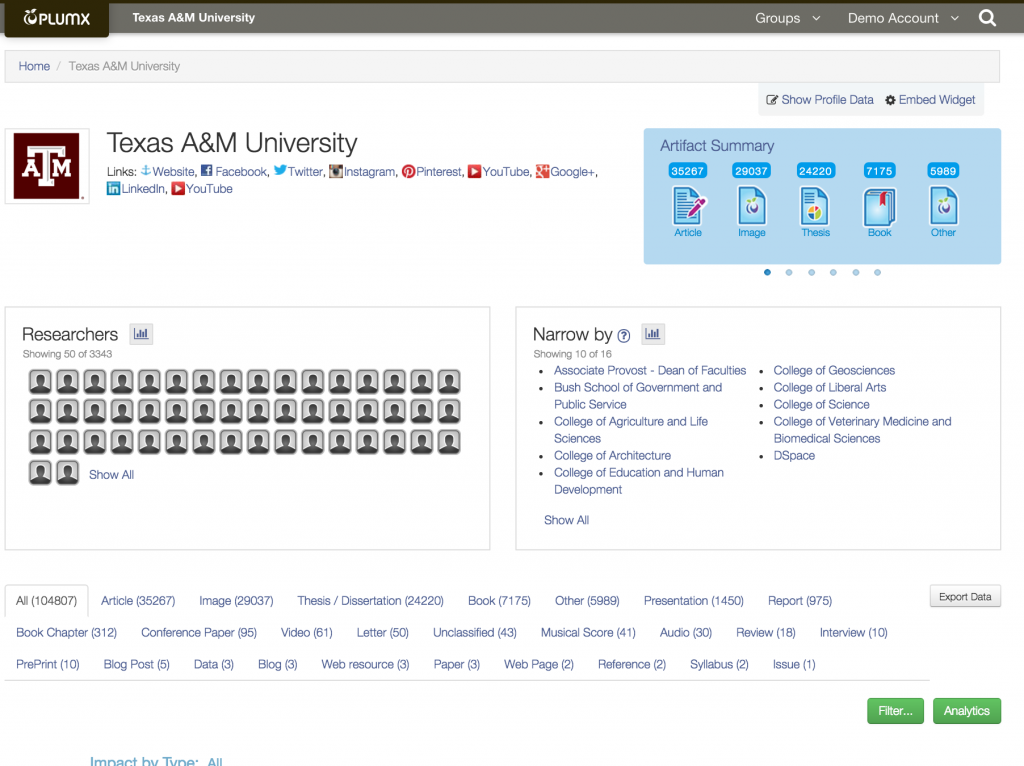Texas A&M Using Plum to Help Achieve Strategic Vision
Texas A&M University is Texas’ first state university, founded in 1876. Today, Texas A&M is a research-intensive university with 17 colleges and departments, and well over 100 degree programs that offer 120 undergraduate degrees and 240 graduate degrees
Vision 2020
In 1999, Texas A&M created “Vision 2020: Creating a Culture of Excellence.” This strategic planning and vision initiative articulates the institution’s recognition that evolution is required to achieve its mission as a land, sea, and space grant institution of global pre-eminence. Now, Texas A&M is embarking on the final phase of Vision 2020. Among the institution’s goals are the following:
- Provide an outstanding educational experience for all students
- Produce impactful new knowledge, innovations and creative works
- Place the needs of the public good at the forefront of its mission
Dr. Bruce Herbert, Director, Scholarly Communications at Texas A&M University Library, is one of the people charged with putting the correct tools and systems in place to achieve Vision 2020. Dr. Herbert recognizes that empowering everyone in the university with information leads to better decision-making, which in turn drives everyone toward meeting the strategic goals.
He also believes that faculty members need to be able to tell their own narratives or stories to engage. In Dr. Herbert’s words:
When the faculty is unable to tell their story; they disengage. You need to care about their stories for them to care about your vision. Excellence at A&M is the sum of all the parts. It is everyone rowing in the same direction and everyone doing a great job. You need everyone engaged.
Organizational Change
A big part of achieving their vision is an emphasis on scholarly communication. As the director of scholarly communication, Dr. Herbert needed to design a program that satisfied the information needs of a broad range of people. He recognized that change can be hard and needed to clearly define scholarly communication.
Below is a picture of the way Dr. Herbert and Texas A&M view their scholarly communication initiatives:

In order to achieve the necessary organization changes and to accomplish these scholarly communication initiatives, Texas A&M needed the right systems in place. As Dr. Herbert commented, “We are building an information ecosystem with multiple tools all tied together around researcher online identity and scholarly impact.”
Below is a picture of their new scholarly identity and impact ecosystem:

In brief, VIVO is their researcher profile system. It is a way to present researchers and their work to the outside world. VIVO is driven by ORCID. ORCID provides a persistent identifier as a way to disambiguate authors. DSpace is the institutional repository that holds research output from the Texas A&M faculty. PlumX is the system that gathers the metrics about the research output, authors, and departments. It is integrated with VIVO for the researcher profile information and DSpace for the research output information.
PlumX at Texas A&M

The PlumX Suite is a group of products developed and supported by PlumTM Analytics that helps anyone involved with research output understand the stories about that research. PlumX Dashboards is the product from the suite that Texas A&M is using to accomplish their scholarly communication and strategic initiatives. It provides a way to group research output by researcher, department, lab or any other user-defined group or hierarchy and uncover the stories of the research through dashboards and analytic reports.
PlumX gathers metrics about all different kinds of research output from articles and blog posts to source code and videos. This large variety of metric data is categorized to make it easier to understand and analyze. These categories include the following:
- Usage – clicks, downloads, views, library holdings, video plays
- Captures – bookmarks, code forks, favorites, readers, watchers
- Mentions – blog posts, comments, reviews, Wikipedia links
- Social media – +1s, likes, shares, tweets
- Citations – PubMed Central, Scopus, patents
Texas A&M is using PlumX to empower the faculty and staff to see what is happening with their work. All levels of the organization can access the appropriate dashboards to understand how other researchers and the community at large is using and interacting with their research output.
According to Dr. Herbert,
What we see about PlumX is not only are you bringing new metrics to the table, but the Dashboard makes it easy for faculty to see a summary of what is happening with their work.
Dr. Herbert explained that prior to PlumX, getting a rapid sense of what was happening with the output was too big of a task to undertake, and that, in turn, made strategic decision-making difficult.
Metrics for All Departments
PlumX tracks metrics for many different research output types, called artifacts. The journal article is often the primary vehicle for communicating research results, especially in many science disciplines. However, there are many other forms of research output, especially for the non-science disciplines. Dr. Herbert explains,
A comprehensive university as large as Texas A&M has all types of scholars and not everybody produces articles for scientific journals. What happens with these other groups is that the impact of their works looks weaker when measured with the traditional tools. So these other scholars are really benefitting from altmetrics and PlumX because they now have data or evidence of the impact of their work that doesn’t exist in these more traditional databases.
Below is the top-level PlumX Dashboard for all of Texas A&M.

Texas A&M is tracking 104,807 individual artifacts. Of that number, about one-third of them are research articles. The rest are items books, presentations, videos and much more. Below is a list of research output that PlumX tracks. (Note that this list grows all of the time; for an up-to-date list, go to https://plumanalytics.com/learn/about-artifacts/.)
| abstracts | file sets | presentations |
| articles | government documents | press releases |
| audios | images | reference |
| bibliographies | interviews | reports |
| blog posts | letters | retractions |
| books | manuscripts | reviews |
| book chapters | maps | source code |
| cases | media | speeches |
| clinical trials | musical scores | syllabi |
| conference papers | newsletters | theses/dissertations |
| corrections | papers | videos |
| datasets | patents | web resources |
| expert opinions | posters | other |
| figures | preprints |